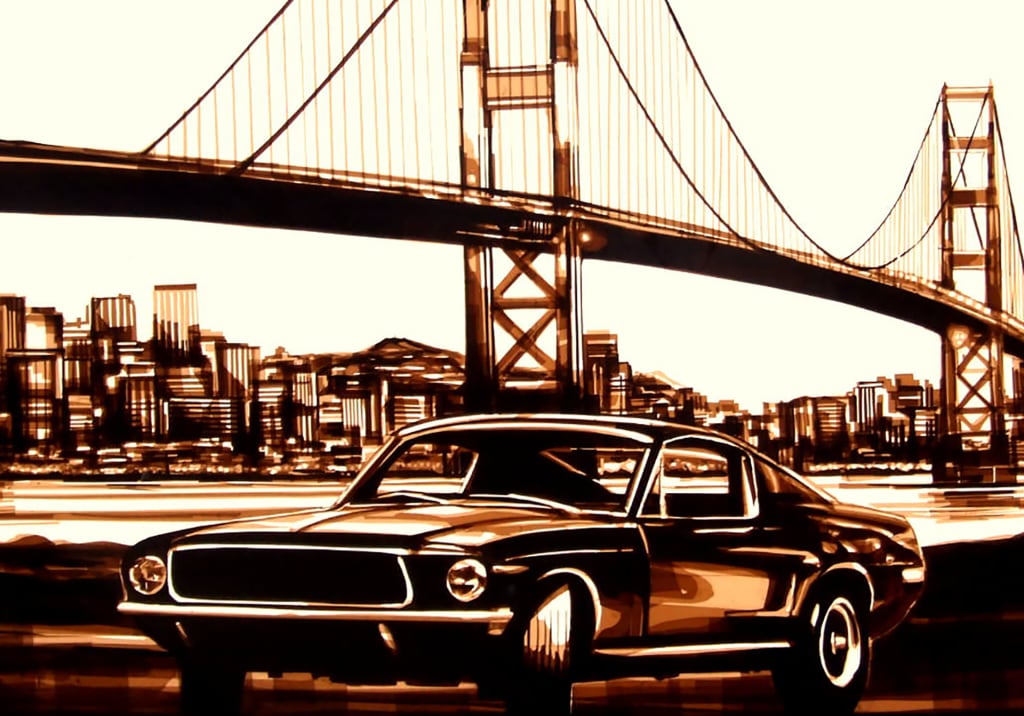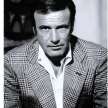Original Special Effects Man Sass Bedig
When they were ready to let blood gush, the original special effects man, Sass Bedig was called in.

Sass Bedig (1913-2000), among countless other professional distinctions, is the man who made the blood flow in most of the gory Sam Peckinpah 1970s tough guy movies. When Sam was ready to let it gush, the original special effects man, Sass Bedig, was called in.
“Myself, I only like a trickle of blood, but Sam likes so damn much. You got to be able to see the bullets go in and the bullets come out. When I work with Sam I know I’ll have to do everything three times to get it like he wants. Personally, I don’t even like violence, but somebody out there sure eats it up.” Ever since Thomas Edison produced the first documented special effect by lopping off the Queen's head in an 1893 thriller called The Execution of Mary, Queen of Scots, titillation-hungry movie audiences have delighted in asking the question dearest to a special effects man’s heart: "How did they do that?"
Killing people, blowing up towns, and generally spreading chaos and destruction kept Sass Bedig employed with one studio or another or with his own independent company since the birth of the special effects departments on the movie lots in the early 1930s. He is perhaps one of the most important people responsible for achieving the power and prominence that had long eluded professional stuntmen. On the industry, he said “Our challenge is to create whatever is in the script. They’re always coming to us with the question: Can you do this?”
Special effects guys from the early 20th century had this thing about meeting any challenge. Sass said back in the early 80s, “They always want more—more effects, more authenticity. When you roll a car, they want it to roll. No trick stuff, no guy wires, and it’s getting a little hairier for the guys to do. To roll over cars you used to use a cable to flip them. But that won’t do anymore. The audience can spot things like that, and even if they can’t, the director thinks they can. You weld a barrel to the underside of the car and put a piece of telephone pole inside it. Then you put some explosives in there and you give the driver a switch which will activate it when the car gets to the right place. He touches off the explosive and it sends the telephone pole smashing into the ground, flipping the car right over. But that tube has to be welded on there real good, and that driver has to be harnessed in and surrounded by roll bars. Most stunt guys are real gutsy, like the great Dar Robinson, who does things like making mid-air jumps from one plane to another. He's got more goddamn guts than most men I know. But I like to be real careful. I’ve been very fortunate over the years in that I’ve never had any real close calls, knock on wood. I’ve seen a lot of guys get hurt, but none on my shows.”
Sass started in the special effects department at Warner’s in 1934, “at the bottom,” as he said, “long before there was even a union.” The state of the art of special effects was exceedingly crude then, compared with the quantum advances in film technology that wound up coming out of films such as Star Wars and Close Encounters. George Lucas and Steven Spielberg were responsible for ushering in a new era of special effects that would eventually pave the way for such visionaries like Ridley Scott and James Cameron.
Sass worked his magic on so many films, beginning with Fighting Seabees in 1943, and a John Wayne film called Oh Oklahoma. That first work led to an unequaled string of special effects triumphs and a reputation as one of the most reliable and innovative men in the industry. A partial list of Bedig's work would include such legendary films as All Quiet on the Western Front, Sergeant York, LeMans (the Steve McQueen Gran Prix race thriller), Bullitt (for which he masterminded the famous San Francisco car chase scenes), The Green Berets (another Wayne war vehicle and perhaps Sass's favorite picture in terms of effects), Freebie and the Bean (which required the building of a slanted 100" ramp for a spectacular car crash), Magnum Force (“Clint Eastwood is very effects-minded,” says Sass), Hawaii (for which Sass was required to burn down the same village every day for a week), The French Connection, The Godfather, and so on.
Of all the cinema genres he's worked in, war films remained Sass's special baby. “Oh, they’re a lot of fun,” he said. “The trick is in the explosives and the smoke. When you create a battlefield you always have to have plenty of black smoke in the air to make it look dreary. You’ve got to keep that warlike look there. I’m always researching, always trying to figure out better ways to create authenticity.”
“War movies take a lot of planning. First you have to check out your locations. You go over the whole script with the director and find out what he wants in each sequence. Then you build the props. When I go on a show I build all the props for the prop master. In Cross of Iron, for instance, Sam wanted to drive a tank through a building and have one of the walls blown off. We just built the wall out of Styrofoam, and it looked spectacular when that tank came barreling through.”
“Then, of course, there are the bullet effects. If you want to show bullets hitting water, you shoot marbles through an air gun. If you want to show a volley of bullets skipping across the ground, you shoot balls filled with white dust out of the air gun. I had to invent a newer and faster air gun for that show. It takes a lot of prep. It took us a half-day to prepare for one scene in The Green Berets where we had 500 bullets spraying across the ground. And it’s not cheap. Those bullet effects cost us $3.06 apiece, and for Cross of Iron I needed 5,000 of them. Then when we got to Yugoslavia we found that there was a duty on them! The effects budget for Cross of Iron was $90,000 and I used every penny of it.”
For all his versatility, Sass was especially famous in the esoteric world of effects for his “blood gags.” Every special effects man had his own formula for blood, but most agree that nobody from the Golden Era created a good, gory killing better than Sass Bedig.
“Used to be that the blood left stains that wouldn't come out, so we had to have three or four identical outfits for anybody that was gonna get killed. But then they come up with better stuff that we can wash right out.” Of all the murders he engineered, Sass was proudest of the chilling scene in The Godfather when Al Pacino blows away an unsuspecting Sterling Hayden in a New York restaurant.
“For blood effects you have to work very closely with the makeup man. You put a tiny explosive charge and a little electrical squib in some latex rubber and paste that on the actor at the point where the bullet is to enter. Then you cover the whole thing with makeup. In that restaurant scene we put a metal plate on Sterling's forehead to protect him from the explosion, then the latex with the charge and the squib, then the makeup. When Pacino supposedly fired the shot, we exploded the charge and that smashed a little blood capsule in there which spouted down Sterling's face.”
About the Creator
Peter Dill
Ph.D. in Cinema Studies, born in LA moved to New York, will never regret it.






Comments
There are no comments for this story
Be the first to respond and start the conversation.